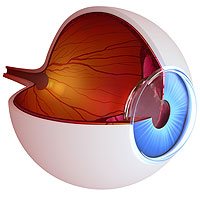
Due to the aging process, it’s normal to start encountering problems with your vision. Many issues share symptoms, so it can be difficult to tell what is causing these problems to occur.
The only way to get an official diagnosis and treat these issues is to see your eye doctor. Scheduling regular appointments are one of the best things you can do for your eyes!
You can schedule one at Eye Care Specialists in Scranton, PA. Depending on what the doctor sees, you may need to go through a cataract screening.
Not sure what they’ll look for? Keep reading for 7 signs you may have a cataract!
1. Blurry Vision
One of the most obvious signs that something is going wrong with your sight is when it becomes blurry. Cataracts block sight by getting in the way of light that is trying to enter your eye.
Cataracts start small in the lens of the eye, but only grow larger and more opaque until they fill the lens. Due to this, it becomes quite common to experience blurry vision if you have a cataract.
2. Difficulty Seeing at Night
If you have a cataract, another thing you may notice is it will become harder to see at night. This is especially noticeable if you’re in low-light.
Stop driving if you ever feel unsafe, no matter what time of day. Driving with any kind of impaired vision is incredibly dangerous!
3. Halos
Another symptom that makes nighttime driving difficult is the appearance of halos. Rings around light fixtures, such as oncoming headlights, may appear as a cataract develops.
These can be very distracting and reduce your safety as you operate your vehicle.
4. Yellow Tint and Faded Colors
Cataracts start off small and relatively transparent. As they grow, they not only block more and more light from entering, but they also change in color.
With more mature cataracts, you may begin to notice everything taking on an ugly yellowish-brown color. Besides being unpleasant, this can also reduce your ability to see any contrast.
As a result, you may notice that your eyesight seems “muddier” than normal.
5. Glare
Depending on how they develop inside the lens, cataracts can have different effects on vision. Certain cataracts can cause light to scatter inside the eye.
Light bouncing around the inside of the eye can cause sharp pain known as light sensitivity. Glare can also make it much harder to complete normal day to day activities.
6. Double Vision
Sometimes cataracts can affect the shape of the lens so that more than image forms. If this occurs, you’ll notice you’re seeing in double.
This can be a disruptive experience, as it becomes much more difficult to focus your vision.
7. Second Sight
In a similar vein to double vision, cataracts can sometimes help your vision by changing the shape of the lens. Some nearsighted patients may notice their eyesight improving.
This is most likely to occur during the early stages of cataract development. This benefit is far from long-lasting.
As the cataract darkens, the light will still not be able to pass through. Instead, your vision will simply continue to worsen as your cataracts continue developing.
If you have any or several of these symptoms, you should contact your eye doctor. While they may be the beginning of cataract development, any changes in vision could be the result of more dangerous conditions.
Need a cataract screening? Schedule one at Eye Care Specialists in Scranton, PA today! There’s no reason to let cataracts ruin your eyesight any longer!

















